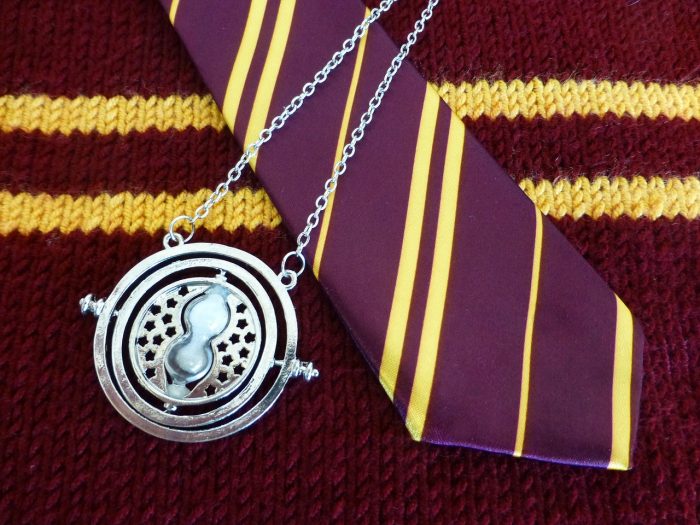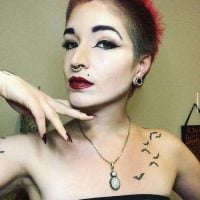
When I was a little girl, one of my absolute favourite things in the whole wide world was the Harry Potter Series. (Oh, who am I kidding? That’s still true today.)
The books, the movies, everything—I loved it. I ate it up like a proverbial fat kid eats cake.
I don’t know how familiar you are with Harry Potter. Maybe you’ve never seen the movies or read the books, and you just have a basic understanding of it being about wizards or some sh*t like that. Maybe you’re more like me and have the entire text of the books tattooed onto your soul.
But I’m going to assume that you’re a little closer to the former, just for safety’s sake, because I want to draw your attention toward a brief, seemingly unimportant scene in the third movie, “Harry Potter and the Prisoner of Azkaban“ (which was released when I was nine years old. Trust me, that bit will become important later).
Near the end of this movie, two male characters are revealed to have a close friendship. These characters are Remus Lupin (a werewolf), and Sirius Black (not a werewolf). Shortly after a reunion scene between the two of them that involved close hugging, Lupin begins to turn into a werewolf. Sirius grabs Lupin and says: “this heart is where you belong, this heart!” indicating Lupin’s own chest.
At the age of nine, when I first saw this scene, I got confused. I think it might have been something about Sirius screaming about hearts as he held Lupin close.
I genuinely thought that Sirius and Lupin were a couple in the context of the movies. And I’m not talking about “shipping” them (for those of you who aren’t familiar with the lingo, that’s geek-talk for thinking that two characters would make an amazing couple, even if they are not romantically or sexually involved in the text itself). I mean that I actually believed they were together.
This wasn’t an isolated incident either. In the Disney movie “Mulan” (which came out when I was three years old), there is a character simply called The Matchmaker, and I was completely convinced that this character was a drag queen. Maybe it was the heavy makeup combined with the fact that she accidentally draws a goatee on herself later on in the movie. Maybe I just didn’t catch on to the fact that it was a goatee made of ink, not hair. For some reason, when I was a kid, I was simply convinced that children’s movies were much more progressive than they actually were.
It wasn’t until my late teens that I discovered that Lupin and Sirius are not a couple in the context of the story, they’re just good friends—or that The Matchmaker was intended to be interpreted as a cisgendered woman.
Now, the reason I interpreted these characters this way could simply be because my parents did not try to hide the existence of other sexualities and genders from me as a kid, so it simply made sense to me that if these people existed in the real world, they would exist in my media as well. Or maybe it all has something to do with the fact that I personally grew up to be bisexual; maybe whatever it is that has hardwired me to be queer made me search for role models in my media as early as three years old. What I do know is that I often make people laugh with the “I genuinely thought Lupin and Sirius were a couple” story now.
The fact that I followed this line of thinking as a young child is linked to a larger discussion being had in our media lately: is it okay for children to be exposed to queer characters in media?
Actual queer characters (not just the ones I’ve made up in my head) have been confirmed in some children’s media lately, possibly the most famous example being LeFou in Disney’s live-action remake of “Beauty and the Beast.” Yet, LeFou sort of ended up being a disappointment to both sides of the argument. Parents who disagreed with queer representation in children’s media refused to take their children to this movie because they didn’t want them exposed to a message that they thought could potentially be harmful. Meanwhile, audience members who wanted to see explicit queer representation got little more than a split-second dance scene between two men, hardly confirming or denying anything (after all, even as a nine-year-old, I would have known that two men can dance together without being in love with each other).
Since then, we’ve had character after character in children’s media (including Valkyrie from “Thor: Ragnarok” and Yellow Ranger Trini from “the Power Rangers movie“) either hint at potential queerness, or be marketed to the audience as a queer character, while never actually coming right out and saying, “Hello, yes, I am an actual queer character, pleased to meet you!”
In other words, this discussion can bring in an audience that desperately wants to see actual, confirmed queer representation in mainstream, children’s media, while simultaneously appeasing the parents who don’t want their children exposed to “that gross, gay stuff.”
At the end of day, what’s wrong with exposing children to the existence of queer individuals?
I know that I’m probably not a shining example of someone who grew up exposed to this in my media and turned out “fine,” considering that one of the major concerns of parents who stand against including queer characters in media is that it will “turn their kids gay.” To that I say two things:
1) I don’t think that I “became bisexual” the moment that I heard Gary Oldman screaming “this heart is where you belong” to David Thewlis. I sort of think that being bisexual was somewhere in my genetic code long before that.
2) When I was a young, pre-pubescent nerd wearing a lightning bolt scar drawn onto my forehead with eyeliner, I didn’t think anything of this quote-unquote “relationship.” I didn’t think it was weird that Sirius and Lupin “were a couple.” Sure, at the time I decided that they were my favourite couple in the series, but that was mostly because the only other couples I had to choose from were all parents (which, to a nine-year-old girl, was gross).
You know those stories that you hear of a little kid asking, “What are gay people?” and the parent explains it calmly, to which the kid goes, “Oh. Can I go play now?” That was my reaction to these movies. I didn’t linger on it, hate it, think it was gross, or decide that I was going to grow up to be in a same-sex relationship—just like Lupin and Sirius.
I saw it, thought it was kind of romantic the way that Sirius tried to pull Lupin back from being a monster just like in “Beauty and the Beast”—and then I moved onto the awesome werewolf fight scene, the flying broomsticks, and the supposed devil worship. Truth be told, if this wasn’t a current topic in mainstream media, and hadn’t been wrong in my interpretation of the film, I may have never thought about this again.
So now when people discuss the potential “dangers” of including queer characters in children’s media, I go back to nine-year-old me, who thought nothing of the possibility that two wizards were a couple, or that The Matchmaker was openly a drag queen in ancient China. None of this even phased me. Perhaps it would have had I told the adults in my life how I had interpreted these characters and they had laughed, or told me I was wrong, but no one ever did that.
No one ever told me that queer characters didn’t belong in media, so I simply assumed that queer people belonged everywhere. Being informed on these matters, being allowed to think about them and interpret them freely, made me more open-minded and accepting, not only of queer characters, but of queer people in real life—and eventually, of my own queerness as well.
It wasn’t until I grew up that I discovered that others disagreed with me. To this day, I still don’t understand why.
~
Author: Ciara Hall
Image: Pixabay
Editor: Jen Schwartz
Copy Editor: Travis May










Read 0 comments and reply